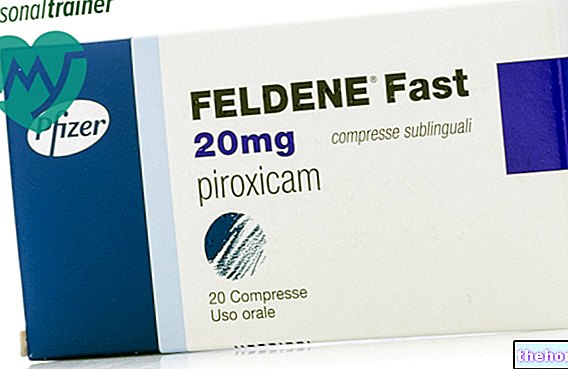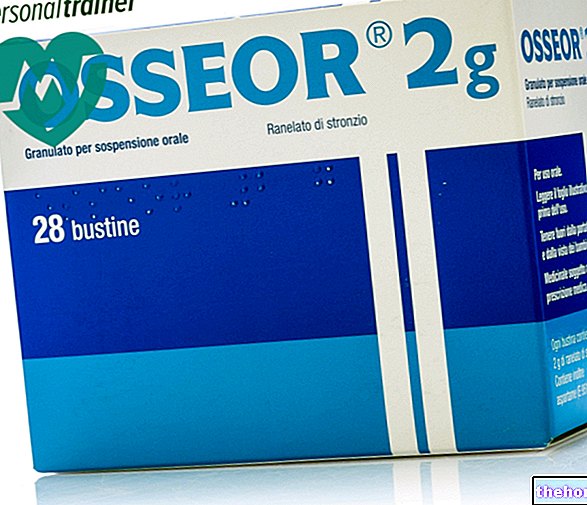Active ingredients: Betahistine (Betahistine dihydrochloride)
MICROSER 8 mg tablets
MICROSER 16 mg tablets
MICROSER 24 mg tablets
MICROSER 12.5 mg / mL oral drops, solution
Indications Why is Microser used? What is it for?
Microser contains the active substance betahistine, which belongs to a group of medicines called histamine analogues. It is used to treat the symptoms of Ménière's syndrome, such as:
- dizziness (vertigo)
- ringing in the ears (tinnitus)
- hearing loss.
This medicine works by improving the flow of blood to the inside of the ear.
This reduces the pressure build-up.
Contraindications When Microser should not be used
- if you are allergic to betahistine or any of the other ingredients of this medicine (listed in section 6)
- if you have high blood pressure caused by an adrenal tumor (pheochromocytoma)
- if you have a "stomach ulcer (peptic or gastric)
Precautions for use What you need to know before taking Microser
Talk to your doctor before taking Microser if you have:
- asthma
- a red itchy skin, rash or hay fever
- low blood pressure.
- are pregnant or breastfeeding (see "Pregnancy and breastfeeding")
Children and adolescents
Microser is not recommended in children and adolescents below 18 years of age due to a lack of data on safety and efficacy.
Interactions Which drugs or foods can modify the effect of Microser
Tell your doctor or pharmacist if you are taking, have recently taken or might take any other medicines.
Do not take antihistamines while being treated with Microser.
The use of Microser oral drops, solution can give a positive result in tests on the level of alcohol in the blood or in the urine carried out by some sports federations.
Warnings It is important to know that:
Pregnancy and breastfeeding
Pregnancy
If you are pregnant or breast-feeding, think you may be pregnant or are planning to have a baby, ask your doctor or pharmacist for advice before taking this medicine.
Pregnancy
It is not known if Microser passes into breast milk.
Driving and using machines
Microser does not affect the ability to drive or use machines.
Microser drops contains ethanol (alcohol)
Microser oral drops solution, contains 6.2% ethanol (alcohol), i.e. up to 128 mg per maximum daily dose, equivalent to 3.2 mL of beer or 1.3 mL of wine per dose.
It can be harmful to alcoholics. To be considered in pregnant or lactating women, children and high-risk groups such as people with liver disease or epilepsy.
Dose, Method and Time of Administration How to use Microser: Posology
Always take this medicine exactly as your doctor or pharmacist has told you. If in doubt, consult your doctor or pharmacist. Take the tablets or oral drops solution together or after meals.
The recommended dose is:
Microser 8 mg tablets: 2-4 tablets per day
Microser 16 mg tablets: 2-3 tablets per day
Microser 24 mg tablets: 1 tablet 2 times a day
Microser oral drops, solution (with dispenser): 1 actuation (0.64 mL of solution, equivalent to 8 mg of betahistine) diluted in water, 2-4 times a day.
How to use the dispenser:
- The bottle has a child resistant safety cap. To open, push the plastic cap down firmly and remove the cap by unscrewing it.
- Remove the protection from the cannula of the dispenser contained in the package and screw it to the neck of the bottle. The dispenser must be left screwed on until the contents of the bottle are finished.
- Before taking the dose for the first time, remove the protective cap from the dispenser spout and press the dispenser empty 4-5 times. Do not use the first amount of solution dispensed.
- To take a dose, remove the protective cap and place a spoon or glass under the dispenser. Press the dispenser as far as it will go; in this way you will get a dose of 8 mg of Microser.
- Replace the protective cap after use and store the bottle in an upright position.
Use in children and adolescents
Microser should not be used in children and adolescents under the age of 18.
Overdose What to do if you have taken too much Microser
If you take more Microser than you should
See your doctor as soon as possible or go to the nearest hospital. Symptoms of overdose are headache, dizziness, fast heart rate, difficulty breathing, or fluid retention. Rarely, overdose can cause seizures.
If you forget to take Microser
Wait until you need to take your next dose. Do not take a double dose to make up for a forgotten tablet or dose.
If you stop using Microser
If you have any further questions on the use of this medicine, ask your doctor or pharmacist.
Side Effects What are the side effects of Microser
Like all medicines, this medicine can cause side effects, although not everybody gets them.
The following side effects have been observed:
Rare (may affect less than 1 in 1,000 people)
- Worsening of pre-existing bronchial asthma, palpitations
Frequency not known (frequency cannot be estimated from the available data)
- Dizziness
- Headache
- Abnormal sense of touch
- Tremor
- Shortness of breath
- Bleeding in the stomach (gastrointestinal haemorrhage)
- Stomach ache
- Nausea (feeling sick), vomiting (being sick)
- Increase in liver enzymes (shown in blood tests)
- Skin rash, itching or swelling (hives, itching)
- Swelling (edema)
- Hypersensitivity reaction (allergy)
Compliance with the instructions contained in the package leaflet reduces the risk of undesirable effects.
Reporting of side effects
If you get any side effects, talk to your doctor or pharmacist. This includes any possible side effects not listed in this leaflet. You can also report side effects directly via the national reporting system at http://www.agenziafarmaco.gov.it/it/responsabili.
By reporting side effects you can help provide more information on the safety of this medicine.
Expiry and Retention
Keep this medicine out of the sight and reach of children.
Do not use this medicine after the expiry date which is stated on the carton or bottle after EXP. The expiry date refers to the last day of that month.
After opening, Microser oral drops solution should be used within 6 months. Do not store above 25 ° C.
Do not throw any medicines via wastewater or household waste. Ask your pharmacist how to throw away medicines you no longer use. This will help protect the environment.
Composition and pharmaceutical form
What Microser contains
The active ingredient is betahistine dihydrochloride.
- Microser 8 mg tablets contain 8 mg of betahistine
- Microser 16 mg tablets contain 16 mg of betahistine
- Microser 24 mg tablets contain 24 mg of betahistine
- Microser oral drops solution contains 12.5 mg of betahistine per 1 mL.
The other ingredients are:
Tablets
Microcrystalline cellulose, mannitol, precipitated silica, talc, anhydrous citric acid.
Oral drops solution
Glycerol, alcohol, aminoacetic acid, sodium saccharinate, benzoic acid (E210), sodium edetate, propyl gallate, orange flavor, purified water.
Description of the appearance of the Microser and contents of the package
Microser 8 mg tablets are packed in blisters of 30, 40 or 50 tablets
Microser 16 mg tablets are packed in blisters of 20 or 30 tablets
Microser 24 mg tablets are packed in blisters of 20 or 30 tablets
Microser 12.5 mg / mL oral drops solution: the solution is packaged in a 30 mL bottle with dispenser.
Source Package Leaflet: AIFA (Italian Medicines Agency). Content published in January 2016. The information present may not be up-to-date.
To have access to the most up-to-date version, it is advisable to access the AIFA (Italian Medicines Agency) website. Disclaimer and useful information.
01.0 NAME OF THE MEDICINAL PRODUCT
MICROSER
02.0 QUALITATIVE AND QUANTITATIVE COMPOSITION
Microser 8 mg tablets
One tablet contains:
active principle: betahistine dihydrochloride 8 mg.
Microser 16 mg tablets
One tablet contains:
active principle: betahistine dihydrochloride 16 mg.
Microser 24 mg tablets
One tablet contains:
active principle: betahistine dihydrochloride 24 mg.
Microser 12.5 mg / ml oral drops, solution
100 ml of solution contain:
active principle: betahistine dihydrochloride 1.25 g.
Excipients: ethyl alcohol
For the full list of excipients see section 6.1
03.0 PHARMACEUTICAL FORM
Tablets, oral solution drops (with dispenser).
04.0 CLINICAL INFORMATION
04.1 Therapeutic indications
Ménière's syndrome.
04.2 Posology and method of administration
Tablets 8 mg: 2-4 tablets per day, preferably with meals.
Tablets 16 mg: 2-3 tablets per day, preferably with meals.
24 mg tablets: 1 tablet 2 times a day, preferably with meals
Oral drops, solution (with dispenser): 1 actuation, equal to 8 mg of betahistine (0.64 ml of solution), diluted in water, 2-4 times a day, preferably with meals.
Pediatric population
Microser it is not recommended for use in children and adolescents under the age of 18. The safety and efficacy of Microser have not been established in this patient group.
04.3 Contraindications
Hypersensitivity to the active substance or to any of the excipients. Peptic ulcer in active phase.
Pheochromocytoma.
04.4 Special warnings and appropriate precautions for use
Caution is required when treating patients:
with a history of peptic ulcer, in order not to induce exacerbation of the pathological form
In subjects suffering from bronchial asthma, Microser must be administered under medical supervision
Preclinical data suggest that Microser should be used with caution in the following clinical conditions:
- patients with urticaria, rash, allergic rhinitis since it can cause these symptoms to worsen;
- patients with pronounced hypotension;
- patients taking antihistamines concomitantly (see section 4.5 "Interaction with other medicinal products and other forms of interaction").
Do not administer to children and adolescents under 18 years of age due to lack of data on safety and efficacy.
A specific dosage regimen is not required in elderly patients.
Important information about some of the ingredients
Microser oral drops solution, contains 6.2 vol% ethanol (alcohol), eg. up to 128 mg per maximum daily dose, equivalent to 3.2 ml of beer and 1.3 ml of wine per dose. It can be harmful to alcoholics. To be taken into consideration in pregnant or lactating women, children and high-risk groups such as people with liver disease or epilepsy.
For those who carry out sporting activities, the use of medicines containing ethyl alcohol can determine positive doping tests in relation to the alcohol concentration limits indicated by some sports federations.
04.5 Interactions with other medicinal products and other forms of interaction
Do not administer simultaneously with antihistamines.
Since betahistine is a histamine analogue, co-administration with antihistamines can cause mutual attenuation of the effects of the active ingredients.
04.6 Pregnancy and lactation
In pregnant women, the product should only be administered in case of real need and under direct medical supervision. In breastfeeding women it is recommended to take the medicine after consulting your doctor.
04.7 Effects on ability to drive and use machines
Microser does not affect the ability to drive or use machines.
04.8 Undesirable effects
The frequency of adverse reactions is described below:
Very common (≥1 / 10)
Common (≥1 / 100,
Uncommon (≥1 / 1,000 to
Rare (≥1 / 10,000,
Very rare (
Not known (frequency cannot be estimated from the available data)
The following adverse reactions were observed:
Nervous system disorders
Frequency not known: dizziness, headache, dysesthesia, tremor
Respiratory, thoracic and mediastinal disorders
Frequency not known: dyspnoea
Rare: worsening of pre-existing bronchial asthma
Cardiac disorders:
Rare: palpitations
Gastrointestinal disorders
Frequency not known: gastrointestinal haemorrhage, abdominal pain, nausea, vomiting,
Hepatobiliary disorders
Frequency not known: increase in liver enzymes
Skin and subcutaneous tissue disorders
Frequency not known: rash, hives, itching
General disorders and administration site conditions
Frequency not known: edema
Disorders of the immune system
Occasionally nausea, idiosyncratic manifestations.
Reporting of suspected adverse reactions
Reporting of suspected adverse reactions occurring after authorization of the medicinal product is important as it allows continuous monitoring of the benefit / risk balance of the medicinal product. Healthcare professionals are asked to report any suspected adverse reactions via the national reporting system. "address: www.agenziafarmaco.gov.it/it/responsabili.
04.9 Overdose
Symptoms
Based on experience with histamine, betahistine overdose may be accompanied by symptoms such as headache, dizziness, tachycardia, hypotonia, bronchospasm, edema. On rare occasions, seizures may occur.
Emergency measures
In the event of an overdose, gastric lavage is recommended and general measures must be implemented. There is no specific antidote for betahistine dihydrochloride. Generally, in addition to symptomatic treatment, fast-acting antihistamines can work as an antidote. Patients should be monitored for signs of toxicity. In case of hypotonia, bronchospasm or edema, cortisone and adrenaline can be used as a countermeasure.
05.0 PHARMACOLOGICAL PROPERTIES
05.1 Pharmacodynamic properties
Pharmacotherapeutic group: antivertigo preparations.
ATC code: N07CA01.
Betahistine dihydrochloride is an original synthetic product active at the level of organ microcirculation which helps to restore microcirculatory flow. This action has also been highlighted at the level of the labyrinth. Moreover, no changes in capillary permeability, nor modifications of the capillary permeability, have been highlighted. blood pressure, nor influences on smooth muscle and gastric acid secretion Betahistine dihydrochloride is a histamine-like drug, which therefore acts like histamine on the precapillary sphincters by increasing the precapillary microcirculatory flow. Animal studies have shown that betahistine dihydrochloride acts in a qualitatively similar way to histamine, however, unlike this it can be administered orally and is free from the side effects of histamine.
05.2 Pharmacokinetic properties
In humans, the product is rapidly absorbed by oral administration and reaches peak blood levels within the third hour. Most of the orally administered dose is excreted in the urine in the form of the metabolite: 2-pyridyl acetic acid and elimination is almost complete within 24 hours.
05.3 Preclinical safety data
Non-clinical data reveal no risk for humans based on conventional studies of pharmacology, safety, repeated dose toxicity, genotoxicity, carcinogenic potential, reproductive toxicity.
06.0 PHARMACEUTICAL INFORMATION
06.1 Excipients
Tablets 8 mg: precipitated silica, anhydrous citric acid, microcrystalline cellulose, mannitol, talc.
Tablets 16 mg: precipitated silica, anhydrous citric acid, microcrystalline cellulose, mannitol, talc.
24 mg tablets: precipitated silica, anhydrous citric acid, microcrystalline cellulose, mannitol, talc.
Oral drops, solution: glycerol, ethyl alcohol, aminoacetic acid, sodium saccharinate, benzoic acid, sodium edetate, propyl gallate, orange flavor, purified water.
06.2 Incompatibility
Not relevant.
06.3 Period of validity
Tablets: 3 years.
Oral drops, solution (with dispenser): 2 years.
The shelf life after first opening the bottle is 6 months.
06.4 Special precautions for storage
MICROSER oral drops, solution: store below 25 ° C.
MICROSER tablets, This medicinal product does not require any special storage conditions
06.5 Nature of the immediate packaging and contents of the package
8 mg tablets: PVC / PE / PVDC and aluminum blisters
packaging: 50 tablets 8 mg
40 tablets 8 mg
30 tablets 8 mg
16 mg tablets: PVC / PE / PVDC and aluminum blisters
packaging: 20 tablets 16 mg
30 tablets 16 mg
24 mg tablets: PVC / PE / PVDC and aluminum blisters
package: 20 tablets 24 mg
30 tablets 24 mg
Oral drops, solution: yellow glass bottle with polythene / polypropylene dispenser
packaging: 30 ml bottle
06.6 Instructions for use and handling
The bottle is closed with a child resistant safety cap. To open, push the plastic cap down firmly, then unscrew.
On first use, remove the protection from the dispenser cannula contained in the package and screw it to the neck of the Microser bottle
To obtain a regular delivery, press the dispenser empty 4 - 5 times (this operation must not be repeated for subsequent administrations).
Place a spoon or a glass under the spout, press the dispenser: each single pressure on the dispenser is equivalent to dispensing a single dose of 8 mg of Microser.
Leave the dispenser screwed to the Microser bottle for subsequent use. Reinsert the spout protective cap after each dispensing. Store the bottle upright.
07.0 MARKETING AUTHORIZATION HOLDER
GRÜNENTHAL ITALIA S.r.l. - Via Carlo Bo, 11 - 20143 Milan
08.0 MARKETING AUTHORIZATION NUMBER
Microser 8 mg - 50 tablets - A.I.C. n. 022628034
Microser 8 mg - 40 tablets - A.I.C. n. 022628022
Microser 8 mg - 30 tablets - A.I.C. n. 022628010
Microser 16 mg - 20 tablets - A.I.C. n. 022628059
Microser 16 mg - 30 tablets - A.I.C. n. 022628061
Microser 24 mg - 20 tablets - A.I.C. n. 022628097
Microser 24 mg - 30 tablets - A.I.C. n. 022628109
Microser 12.5 mg / ml oral drops, solution - bottle 30 ml - A.I.C. n. 022628046
09.0 DATE OF FIRST AUTHORIZATION OR RENEWAL OF THE AUTHORIZATION
31 December 1973/1 June 2010
10.0 DATE OF REVISION OF THE TEXT
11 April 2015























-nelle-carni-di-maiale.jpg)




